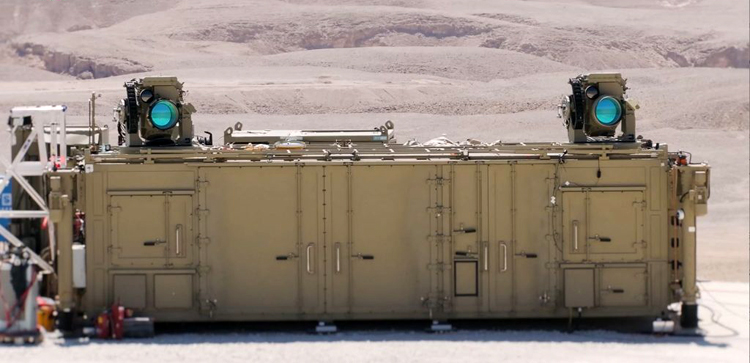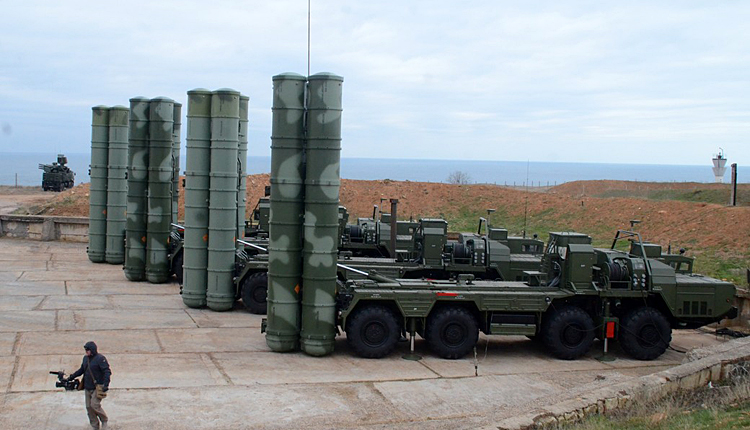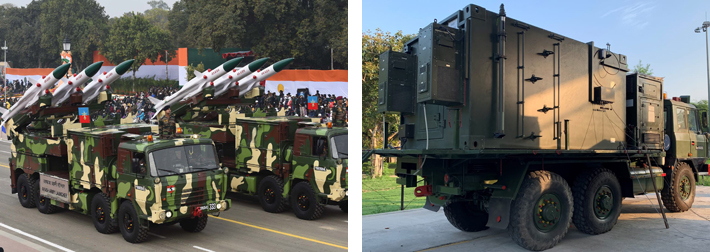INDIAN ARMED FORCES CHIEFS ON OUR RELENTLESS AND FOCUSED PUBLISHING EFFORTS

The insightful articles, inspiring narrations and analytical perspectives presented by the Editorial Team, establish an alluring connect with the reader. My compliments and best wishes to SP Guide Publications.

"Over the past 60 years, the growth of SP Guide Publications has mirrored the rising stature of Indian Navy. Its well-researched and informative magazines on Defence and Aerospace sector have served to shape an educated opinion of our military personnel, policy makers and the public alike. I wish SP's Publication team continued success, fair winds and following seas in all future endeavour!"

Since, its inception in 1964, SP Guide Publications has consistently demonstrated commitment to high-quality journalism in the aerospace and defence sectors, earning a well-deserved reputation as Asia's largest media house in this domain. I wish SP Guide Publications continued success in its pursuit of excellence.
Iron Beam & Sudarshan Chakra
Israel's breakthrough with the Iron Beam 450 laser-based air defence system and India's ongoing efforts to develop an indigenous, multi-layered defence network highlights both nations' drive toward advanced, self-reliant air defence capabilities
 |
The Author is Former Director General of Information Systems and A Special Forces Veteran, Indian Army |

According to news reports of September 18, 2025, Israel's Rafael Advanced Defence Systems officially released the 'Iron Beam 450' laser system that could change modern military warfare. Developed through collaboration between Israel's Ministry of Defence's R&D Unit (DDR&D), the Israeli Air Force, Rafael, and Elbit Systems, Iron Beam has completed weeks of rigorous, combat-simulated tests in southern Israel. The Iron Beam complements Israel's multi-layered air defence shield, working alongside the 'Iron Dome', 'David's Sling', and 'Arrow' systems. It targets smaller, short-range threats like rockets, mortars, UAVs, missiles and low-flying aircraft, lightening the burden on more costly kinetic interceptors, enhancing overall air defence coverage. The successful tests of Iron Beam proved its ability to intercept a wide variety of aerial threats with a powerful, precise laser beam aided by Rafael's advanced "adaptive optics" technology. This allows stable targeting even over longer distances while maintaining remarkable efficiency.
Iron Beam places the State of Israel at the forefront of global technology and makes Israel the first country to possess this capability.
Unlike traditional missile interceptors, which have an interception cost of about $60,000, the Iron Beam's laser technology destroys incoming rockets, UAVs, and mortars at the cost of just $2 worth of electricity per shot. Defence Minister Israel Katz said the Iron Beam places the State of Israel at the forefront of global technology and makes Israel the first country to possess this capability. Israel's former Prime Minister Naftali Bennett, highlighting how this system promises to save countless lives while bankrupting enemies with the economy of war turned upside down, said, "The moment we see the projectile, we hit it. No time lag." Brigadier General Yehuda Elmakayes, head and Director of the DDR&D unit, hailed the system as "the dawn of widespread laser capabilities" signalling a paradigm shift toward integrating directed energy weapons throughout Israel's military.

Iron Beam uses a fibre-laser to generate a laser beam to destroy an airborne target. The problem for laser weapons is that air density disperses laser energy, with larger beams facing more atmospheric interference. Hence, Iron Beam shoots hundreds of small, coin-sized beams at a target, which individually face less dispersion. When a beam is detected through a telescopic reflection to have hit the target, more beams are redirected to the spot to concentrate energy until it is destroyed. In 2020, Iron Beam was thought to have a maximum effective range of up to 7 km, and could destroy missiles, UAVs (drones), and mortar shells around four seconds after the fibre-optic lasers make contact with their target. in 2023, it was assessed that with energy levels of 100 kW or more, the system could focus a beam to the diameter of a coin at a distance of 10 km.
Iron Beam, with the cost of just $2 worth of electricity per shot, signals a paradigm shift toward integrating directed energy weapons throughout Israel's military.
With operational deployment expected by year-end, Israeli defence officials plan to improve beam power and range and eventually deploy laser interceptors in space to provide advanced ballistic missile defence. The per unit cost of an Iron Beam system is $60,000. However, the cost per laser shot is only $2, as mentioned above. Some Iranian hypersonic missiles did get through Israel's existing air defence system during the recent Iran-Israel conflagration – successfully penetrating the 'Iron Dome'. According to one report, the US used 25 per cent of its total THAAD missiles to protect Israel during the Iran-Israel War in June 2025. On September 22, 2025, 22 Israelis were reported injured in a Houthi drone attack.

India's air defence proved its mettle during Operation 'Sindoor'. Systems like the 70-km range MSRAM, developed with Israel and the Russian S-400 Triumf are being indigenised on priority. India's Mission 'Sudarshan Chakra', as announced by Prime Minister Narendra Modi on August 15, 2025, has been covered in these columns earlier. While Israel's Iron Beam 450 is "part" of a layered air defence system, Sudarshan Chakra is to be a "composite" multi-layered framework to integrate advanced surveillance, cyber protection, and physical safeguards to protect its citizens and infrastructure from enemy strikes, terrorist or otherwise. Prime Minister Modi had said he wants to expand and modernise this shield by 2035, and that the entire system should be researched, developed, and manufactured in India.
With operational deployment expected by year-end, Israeli defence officials plan to improve beam power and range and eventually deploy laser interceptors in space to provide advanced ballistic missile defence.
According to analysts, India already possesses a robust air defence mechanism and is in the process of indigenising it completely. While the range of Israel's Iron Dome, they say, is about 70 km, India has the surface-to-air missile system Akash; the only system that can engage four aerial targets over a range of 25 km. Akash has been exported to Armenia while several nations in South America, Africa and Asia, including Brazil, the Philippines and Egypt, are showing interest in it. In the 70-km range category, India has the Indian military possess the Medium Range Surface-to-Air Missile (MRSAM), developed jointly by India and Israel Aerospace Industries. The MRSAM is capable of neutralising enemy aerial threats, such as missiles, aircraft, helicopters and guided bombs. It has different variations for use by the Army, Navy, and Air Force. The Indian Army has two units of MRSAM, which is the domestic variant of the Israel-developed Barak-8 SAM (surface-to-air missile) System.

The Indian Army recently received the first batch of 24 Russian-made Igla-S Man Portable Air Defence Systems (MANPADS), along with 100 missiles/ At the same time the Defence Research and Development Organisation (DRDO) is in advanced stages of developing an indigenous MANPADS. The Indian military is also working on the LBRG (Laser Beam Rider Guidance) System. With advanced laser technology, the LBRG System will be a significant boost for India's missile arsenal in both traditional and unconventional battlefields. Project Kusha by DRDO is set to provide the Air Force with a long-range air defence system, with deployment targeted for 2028-29. It will be capable of detecting and destroying enemy projectiles and armour, including cruise missiles, stealth fighter jets and drones at long ranges of up to 350 km.
Sudarshan Chakra is to be a "composite" multi-layered framework to integrate advanced surveillance, cyber protection, and physical safeguards.

(Right) AKASHTEER AIR DEFENCE SYSTEM, DESIGNED & MANUFACTURED BY BEL, PROVED ITS METTLE IN THE WAR-FIELD DURING OPERATION SINDOOR.
India's Sudarshan Chakra (description of which was posted in these columns on August 26 will need to be a scalable architecture to confront nuclear adversaries like China and Pakistan, drones, cruise missiles and hypersonic missiles in a subcontinental battlefield, integrating advanced surveillance, cyber security, and physical safeguards. The Ministry of Defence (MoD) has confirmed that that the offensive edge of Mission Sudarshan Chakra will incorporate near-space weaponry. But in developing the Sudarshan Chakra, much more will need to be done, not just the expenditure like the US planning the 'Golden Dome' land, sea, and space-based missile defence shield estimated to cost USD 200 billion. Hesitancy in carrying out structural reforms, largely due to endemic corruption, has been the bane of defence manufacturing.
Project Kusha by DRDO is set to provide the Air Force with a long-range air defence system, with deployment targeted for 2028-29.
Prime Minister Narendra Modi has directed resumption of the stalled reorganisation of the DRDO, which was approved some two years back. We cannot afford shortcuts to self-reliance in defence, and India's military planners should not hesitate to address structural reforms on animmediate basis. Moreover, we need to shun strategic partnerships under 'Make in India' where transfer of technology is only a joke. At the same time, the government must redouble its efforts to support increased investment in defence research and development (R&D) at home, including for absorbing cutting-edge technologies, the cutting-edge technologies made available through strategic partnerships. The innovation in our defence industry (both public and private) must go full throttle and not to be restricted low-risk practices that hamper the indigenous development of core technologies. We must preserve our strategic autonomy to ensure India finds its rightful place in the comity of nations.





